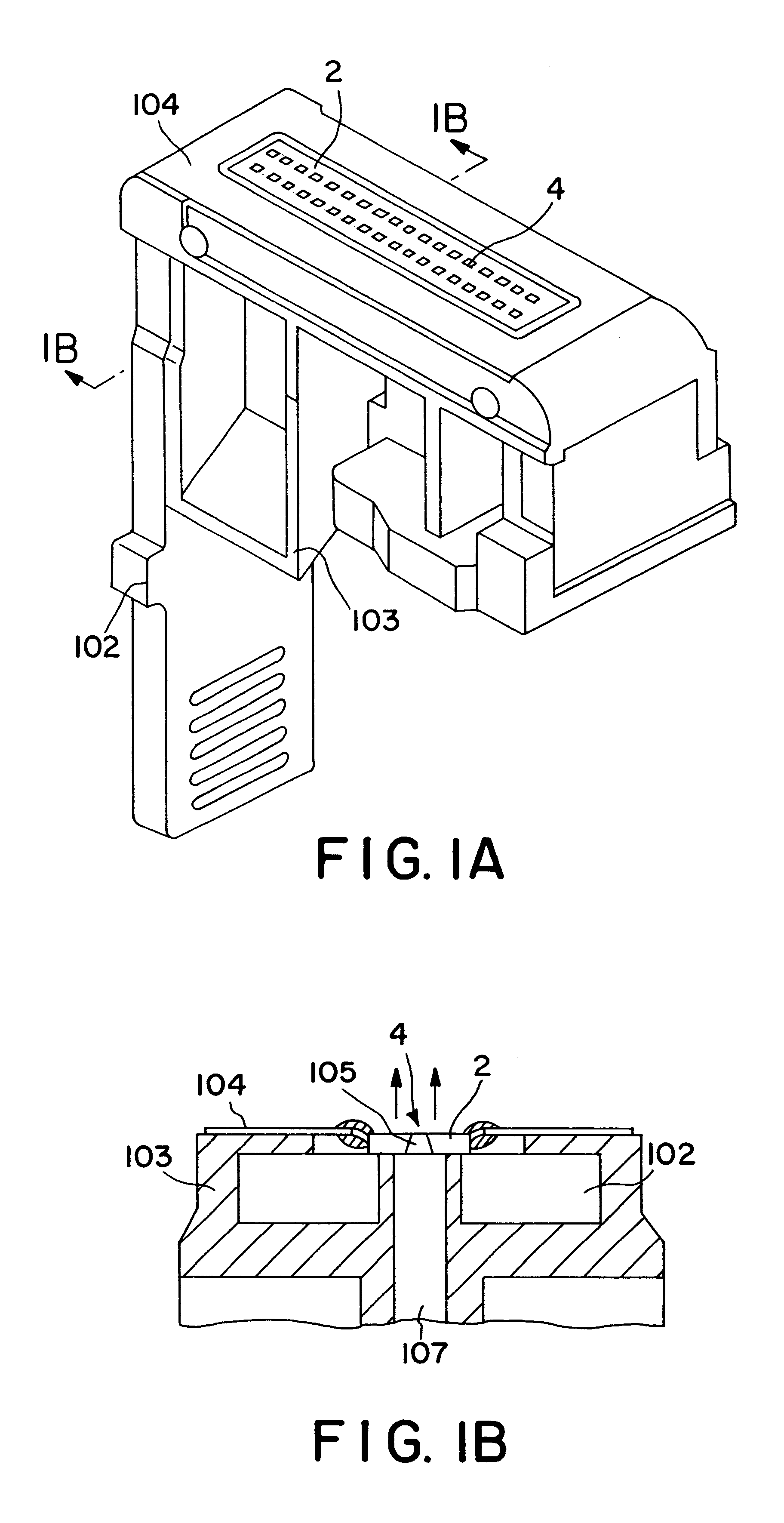Liquid ejection method
- Summary
- Abstract
- Description
- Claims
- Application Information
AI Technical Summary
Benefits of technology
Problems solved by technology
Method used
Image
Examples
Embodiment Construction
For the purpose of comparison, a liquid ejection head which had a structure similar to the one depicted in FIGS. 2A and 2B was produced, except for the dimensions of certain portions. In the comparative liquid ejection head, the thickness T.sub.0 of the orifice plate 3, which equals the distance from the ejection orifice 4 to the liquid path 5 was 9 .mu.m (T.sub.0 =9 .mu.m), and the height Tn of the liquid path 5 was 12 .mu.m (Tn=12 .mu.m). The pulse used to drive this comparative head was in the form of a single pulse which had a width of 2.9 .mu.sec, and a driving value of 9.72 V, or 1.2 times the ejection threshold voltage value of 2. The ink used to test the comparative head had the same properties as the ink used as the liquid described in the preceding embodiment.
Next, a conventional liquid ejection method will be described with reference to a liquid ejection head structured as described above.
FIGS. 4A-4G are sectional drawings which depict the liquid ejection sequence in a co...
PUM
 Login to View More
Login to View More Abstract
Description
Claims
Application Information
 Login to View More
Login to View More - R&D
- Intellectual Property
- Life Sciences
- Materials
- Tech Scout
- Unparalleled Data Quality
- Higher Quality Content
- 60% Fewer Hallucinations
Browse by: Latest US Patents, China's latest patents, Technical Efficacy Thesaurus, Application Domain, Technology Topic, Popular Technical Reports.
© 2025 PatSnap. All rights reserved.Legal|Privacy policy|Modern Slavery Act Transparency Statement|Sitemap|About US| Contact US: help@patsnap.com



